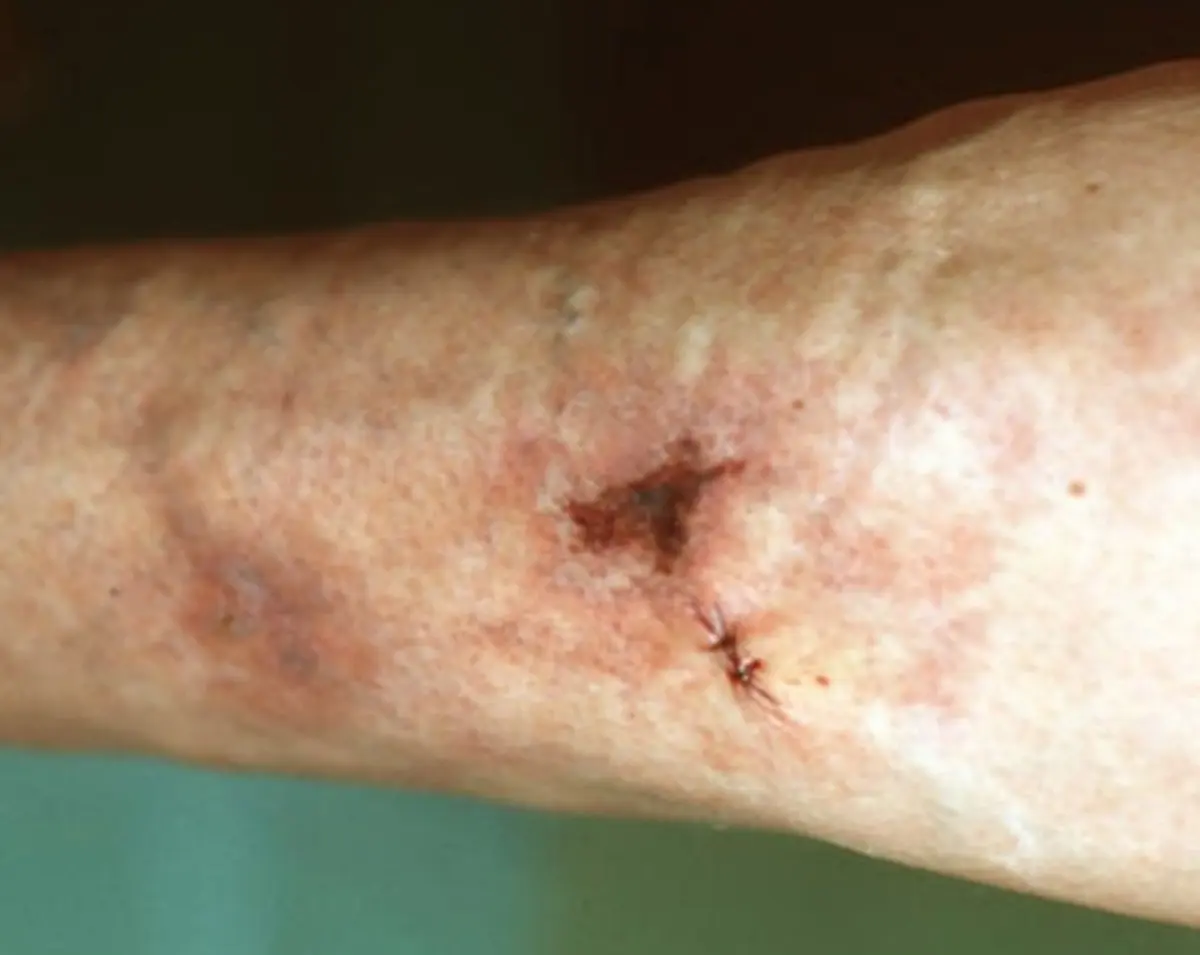Can Calciphylaxis be Cured?
Sometimes
Challenging to treat; outcomes depend on the severity and underlying causes; may be associated with high mortality

What is Calciphylaxis?
Calciphylaxis is a rare and serious condition characterized by the calcification of small blood vessels, leading to tissue necrosis. It often occurs in individuals with kidney disease. Treatment involves addressing underlying factors and wound care.

Clinical Aspects

Characteristics
Rare and serious condition characterized by the calcification of small blood vessels, leading to skin necrosis

Symptoms
Painful skin lesions, often with ulceration and necrosis

Diagnosis
Clinical examination, imaging studies

Prognosis
Variable; can be life-threatening

Complications
Skin ulcers, infections, organ failure
Etiology and Treatment

Causes
Often associated with end-stage renal disease, hyperparathyroidism, or other metabolic disorders

Treatments
Wound care, pain management, treatment of underlying metabolic disorders, sometimes medications to reduce calcium levels

Prevention
Wound care, pain management, treatment of underlying metabolic disorders, sometimes medications to reduce calcium levels
Public Health and Patient Perspectives

Epidemiology
Rare and serious condition involving vascular calcification

Patient Perspectives
Early detection, wound care, and addressing underlying conditions are crucial
Please note that the information provided is based on the current understanding of these conditions and treatments may vary based on individual circumstances. Always consult with a healthcare provider for accurate information.
Share: